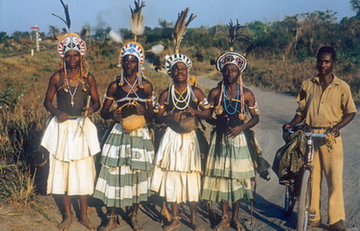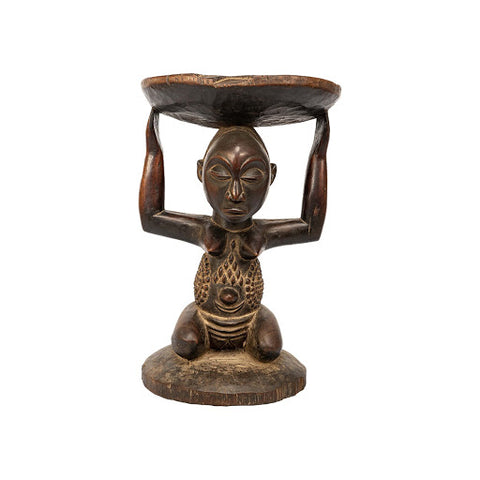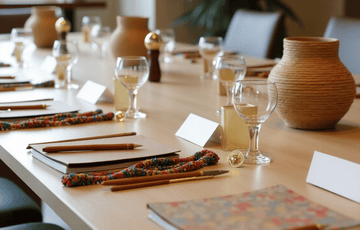The Hemba tribe is a Bantu ethnic group residing in the Democratic Republic of the Congo (DRC). With a rich cultural heritage that has evolved over centuries, the Hemba people are known for their exceptional artistic traditions. Their mastery in creating intricate masks and captivating carvings reflects their deep spiritual beliefs and cultural identity.
Historical and Cultural Background of the Hemba Tribe
To truly appreciate the significance of Hemba masks and carvings, it is crucial to explore the historical and cultural context in which these art forms emerged. The Hemba people trace their origins to the great migrations of Central Africa. Ancestral worship and the veneration of spirits form integral parts of Hemba culture, providing the foundation for their artistic expressions.
The Significance of Masks in Hemba Culture
Masks hold a central role in Hemba ceremonies, rituals, and communal life. These masks often depict ancestral figures, spirits, and human faces, symbolizing the connection between the physical world and the spiritual realm. There are different types of Hemba masks, such as initiation masks, kifwebe masks, and bwami masks, each with its own symbolism and employed in specific ceremonies.
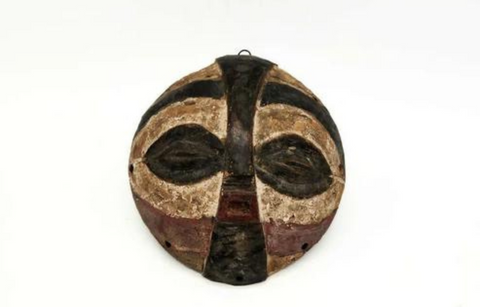
Kifwebe African Mask from Mawu Marketplace
Exploring Hemba Mask Types and Symbolism
Initiation masks are used during significant life transitions, representing the transformation and growth of individuals within the Hemba society. Kifwebe masks, characterized by their bold geometric patterns, hold spiritual power and are associated with protection and warding off evil. Bwami masks are linked to the bwami society, which plays a vital role in governing social and moral codes among the Hemba people.
The Magnificence of Hemba Carvings
Hemba carvings are renowned for their exceptional craftsmanship and attention to detail. Among the most notable Hemba sculptures are the Singiti and Kabeja carvings. Singiti sculptures represent natural authority and embody a sense of power and leadership within the Hemba community. Kabeja carvings, with one body and two faces, symbolize the founding couple of a clan, emphasizing the importance of lineage and ancestry.

Singiti Carving from Mawu Marketplace.
Symbolism and Cultural Significance of Hemba Carvings
Singiti sculptures, with their prominent presence and commanding stance, reflect the ideals of leadership and authority in Hemba society. These carvings also depict various physical attributes and intricate scarifications that hold specific cultural meanings. Kabeja carvings, with their dual faces, represent the founding couple of a clan and serve as a reminder of the ancestral lineage and the importance of marital unity.
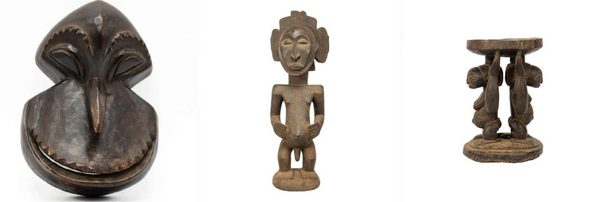
Techniques and Materials in Hemba Artistry
Hemba artisans employ intricate techniques and carefully selected materials in their artistic creations. Wood is the primary medium, chosen for its durability and aesthetic qualities. Using chisels and knives, Hemba craftsmen expertly carve and shape the wood, infusing life into their sculptures and masks. The process requires skill, precision, and a deep understanding of the cultural and spiritual significance behind each piece.

Wood and a collection of chisels.
Preservation and Promotion of Hemba Art
As the Hemba people navigate modern challenges, there are ongoing efforts to preserve and promote their artistic heritage. Initiatives are in place to safeguard Hemba art, support local artisans, and ensure the continuity of mask-making and carving techniques. These endeavors play a crucial role in maintaining the cultural identity of the Hemba tribe and inspiring future generations.
Global Recognition of Hemba Art
The extraordinary beauty and cultural significance of Hemba masks and carvings have garnered global attention and admiration. These artistic treasures have found their way into galleries, museums, and private collections worldwide. The increasing recognition and appreciation of Hemba art contribute not only to the wider appreciation of African artistry but also to the celebration of diverse cultural traditions across the globe.
Celebrating the Hemba Tribe's Artistic Legacy
The masks and carvings of the Hemba tribe stand as testaments to their rich cultural heritage, artistic prowess, and deep spiritual beliefs. Through their exceptional craftsmanship and profound symbolism, Hemba art transports us into a world of ancestral reverence and communal unity. By preserving and honoring these magnificent creations, we acknowledge the importance of cultural preservation and the enduring traditions that have shaped the Hemba people for generations.
Browse our Hemba Collection
Hemba Stool from Mawu Marketplace

